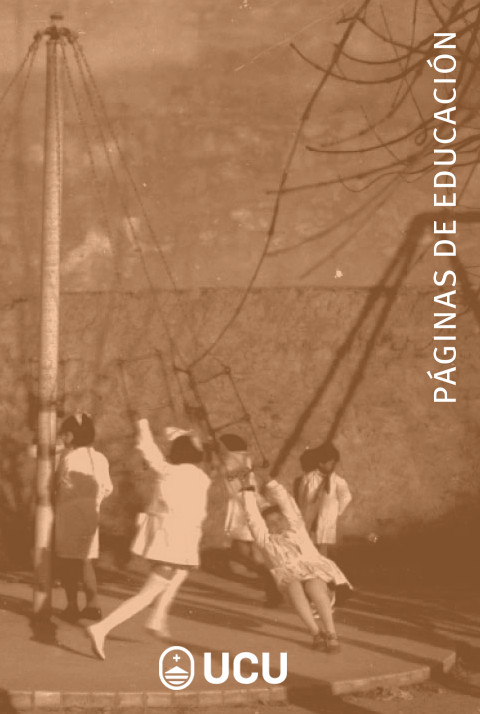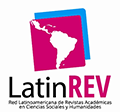Barriers to Implementation of Student Learning-centered Teaching in Health Education
DOI:
https://doi.org/10.22235/pe.v18i2.4569Keywords:
active learning, barriers, higher educationAbstract
Student-centered teaching is regarded as the ideal approach for higher education; however, significant barriers continue to hinder its full adoption. The aim of this study is to identify the barriers reported by academics and to describe the particularities of their perspectives and experiences concerning them. To this end, a qualitative study was conducted using thematic analysis based on interviews with faculty members teaching undergraduate programs in various health-related disciplines in Chile. The barriers and challenges identified cluster around student characteristics, faculty attributes, and institutional and cultural contexts. These barriers emerge from the challenges that educators must face in response to societal change. Therefore, teacher training, the recognition of teaching as a professional endeavor, and the ongoing, both personal and institutional, inquiry into teaching practices are of particular relevance.
Downloads
References
Álvarez-Álvarez, C., & Sanchez-Ruiz, L. (2024). Buenas prácticas para fomentar la interacción en las aulas universitarias. Revista Iberoamericana de Educación Superior, 15(43), 98-104. https://doi.org/10.22201/iisue.20072872e.2024.43.1294
Baik, C., Naylor, R., Arkoudis, S., & Dabrowski, A. (2017). Examining the experiences of first-year students with low tertiary admission scores in Australian universities. Studies in Higher Education, 44(3), 526–538. https://doi.org/10.1080/03075079.2017.1383376
Barboyon Combey, L., & Gargallo López, B. (2021). Métodos centrados en el estudiante. Sus efectos en las estrategias y los enfoques de aprendizaje de los universitarios. Teoría de la Educación. Revista Interuniversitaria, 34(1), 215-237. https://doi.org/10.14201/teri.25600
Bernasconi, A., Berríos, P., & Véliz, D. (2021a). La profesión académica en Chile: 50 años en cuatro momentos / The academic profession in chile: 50 years in four moments. Revista de Educación, 0(24.2), 227-246. https://fh.mdp.edu.ar/revistas/index.php/r_educ/article/view/5549
Bernasconi, A., Berríos Cortés, P., Guzmán, P., Véliz, D., & Celis, S. (2021b). La profesión académica en Chile: perspectivas desde una encuesta internacional. Calidad en la educación, (54), 46-72. https://dx.doi.org/10.31619/caledu.n54.923
Biggs, J. (2006). Calidad del aprendizaje universitario [2ª ed.]. Narcea.
Børte, K., Nesje, K., & Lillejord, S. (2020). Barriers to student active learning in higher education. Teaching in Higher Education, 28(3), 597–615. https://doi.org/10.1080/13562517.2020.1839746
Braun, V., & Clarke, V. (2006). Using thematic analysis in psychology. Qualitative Research in Psychology, 3(2), 77–101. https://doi.org/10.1191/1478088706qp063oa
Brunner, J. J. (Ed.). (2024). Educación Superior en Iberoamérica. Informe 2024. Centro Interuniversitario de Desarrollo. https://cinda.cl/publicaciones/#flipbook-df_1255/3/
Bucklin, B. A., Asdigian, N. L., Hawkins, J. L., & Klein, U. (2021). Making it stick: use of active learning strategies in continuing medical education. BMC medical education, 21(1), 44. https://doi.org/10.1186/s12909-020-02447-0
Chaudhuri, J. D. (2020). Stimulating Intrinsic Motivation in Millennial Students: A New Generation, a New Approach. Anatomical sciences education, 13(2), 250-271. https://doi.org/10.1002/ase.1884
Córica, J. L. (2020). Resistencia docente al cambio: Caracterización y estrategias para un problema no resuelto. RIED. Revista Iberoamericana de Educación a Distancia, 23(2), 255-272. https://doi.org/10.5944/ried.23.2.26578
Elmberger, A., Björck, E., Liljedahl, M., Nieminen, J., & Bolander Laksov, K. (2019). Contradictions in clinical teachers’ engagement in educational development: an activity theory analysis. Advances in health sciences education: theory and practice, 24(1), 125–140. https://doi.org/10.1007/s10459-018-9853-y
Estrada González, C., Pardo Herrera, I., & Pupo Ávila, N. L. (2021). La profesión académica en salud: ¿formación o capacitación? Educación Médica Superior, 35(1). http://scielo.sld.cu/scielo.php?script=sci_arttext&pid=S0864-21412021000100015&lng=es&tlng=es
Fereday, J., & Muir-Cochrane, E. (2006). Demonstrating Rigor Using Thematic Analysis: A Hybrid Approach of Inductive and Deductive Coding and Theme Development. International Journal of Qualitative Methods, 5(1), 80-92. https://doi.org/10.1177/160940690600500107
Fernandes, S., Araújo, A. M., Miguel, I., & Abelha, M. (2023). Teacher Professional Development in Higher Education: The Impact of Pedagogical Training Perceived by Teachers. Education Sciences, 13(3), 309. https://doi.org/10.3390/educsci13030309
Fondón, I., Madero, M. J., & Sarmiento, A. (2010). Principales problemas de los profesores principiantes en la enseñanza universitaria. Formación Universitaria, 3(2), 21-28. https://dx.doi.org/10.4067/S0718-50062010000200004
Forrester, N. (2023). Fed up and burnt out: ‘quiet quitting’ hits academia. Nature, 615(7953), 751-753. https://doi.org/10.1038/d41586-023-00633-w
Frenk, J., Chen, L. C., Chandran, L., Groff, E. O. H., King, R., Meleis, A., & Fineberg, H. V. (2022). Challenges and opportunities for educating health professionals after the COVID-19 pandemic. Lancet, 400(10362), 1539–1556. https://doi.org/10.1016/S0140-6736(22)02092-X
García García, J. A., De León Saldívar, J. G., & Corral Reséndiz, L. F. (2025). Revisión sistemática de autoeficacia en la profesión docente. Revista de Investigación Educativa, Intervención Pedagógica y Docencia, 3(2), 51-76. https://doi.org/10.71770/579ew382
González, C. (2010). El aprendizaje y el conocimiento académico sobre la enseñanza como claves para mejorar la docencia universitaria. Calidad en la Educación, (33), 123-146. https://doi.org/10.31619/caledu.n33.141
Henderson, K. J., Coppens, E. R., & Burns, S. (2021). Addressing Barriers to Implementing Problem-Based Learning. AANA journal, 89(2), 117–124. https://www.proquest.com/openview/c8b33e094c0a7e13c423252bcf055fa4/1.pdf?pq-origsite=gscholar&cbl=41335
Jiménez, N., & San Martín, S. (2019). Tipología de docentes universitarios de acuerdo con su desempeño docente: motivados y no motivados. CIENCIA ergo-sum, 26(2). https://www.redalyc.org/journal/104/10458194003/10458194003.pdf
Karimi, E., Sohrabi, Z., & Aalaa, M. (2022). Change Management in Medical Contexts, especially in Medical Education: A Systematized Review. Journal of advances in medical education & professionalism, 10(4), 219-227. https://doi.org/10.30476/JAMP.2022.96519.1704
Kim, A. M., Speed, C. J., & Macaulay, J. O. (2019). Barriers and strategies: Implementing active learning in biomedical science lectures. Biochemistry and Molecular Biology Education: A Bimonthly Publication of the International Union of Biochemistry and Molecular Biology, 47(1), 29-40. https://doi.org/10.1002/bmb.21190
León Guerrero, M. J., & Crisol Moya, E. (2011). Diseño de cuestionarios (OPPUMAUGR y OPEUMAUGR): La opinión y la percepción del profesorado y de los estudiantes sobre el uso de las metodologías activas en la universidad. Revista de Currículum y Formación de Profesorado, 15(2), 271-298. https://www.redalyc.org/articulo.oa?id=56719129018
Lindblom‐Ylänne, S., Trigwell, K., Nevgi, A., & Ashwin, P. (2006). How approaches to teaching are affected by discipline and teaching context. Studies in Higher Education, 31(3), 285-298. https://doi.org/10.1080/03075070600680539
López Damián, A. I., García Ponce de León, O., Pérez Mora, R., Montero Hernández, V., & Rojas Ortiz, E. L. (2016). Los profesores de tiempo parcial en las universidades públicas estatales: una profesionalización inconclusa. Revista de la Educación Superior, 45(180), 23-39. https://doi.org/10.1016/j.resu.2016.06.007
Mälkki, K., & Lindblom-Ylänne, S. (2012). From reflection to action? Barriers and bridges between higher education teachers’ thoughts and actions. Studies in Higher Education, 37(1), 33-50. https://doi.org/10.1080/03075079.2010.492500
Martínez-Pardo, J. A. (2024). Tipologías en torno al profesorado universitario de tiempo parcial, ¿por qué son necesarias? Revista Iberoamericana de Educación Superior, 15(43), 163-180. https://doi.org/10.22201/iisue.20072872e.2024.43.1783
Montero, L., Triviño, X., Sirhan, M., Moore, P., & Leiva, L. (2012). Barreras para la formación en docencia de los profesores de medicina: una aproximación cualitativa. Revista Médica de Chile, 140(6), 695-702. https://dx.doi.org/10.4067/S0034-98872012000600001
Patston, P., Holmes, D., Maalhagh-Fard, A., Ting, K., & Ziccardi, V. B. (2010). Maximising the potential of part-time clinical teachers. The clinical teacher, 7(4), 247-250. https://doi.org/10.1111/j.1743-498X.2010.00396.x
Peña-Vicuña, P., & Acosta-Peña, R. (2023). La formación en docencia universitaria, aportes y desafíos para la profesionalización docente. Estudios pedagógicos (Valdivia), 49(3), 293-310. https://dx.doi.org/10.4067/s0718-07052023000400293
Puryer, J., McNally, L., & O’Sullivan, D. (2015). The views of part-time clinical teachers regarding their role in undergraduate education at the University of Bristol Dental School. British dental journal, 218(2), 79-83. https://doi.org/10.1038/sj.bdj.2015.30
Schneider, M., & Preckel, F. (2017). Variables associated with achievement in higher education: A systematic review of meta-analyses. Psychological bulletin, 143(6), 565-600. https://doi.org/10.1037/bul0000098
Stains, M., Harshman, J., Barker, M. K., Chasteen, S. V., Cole, R., DeChenne-Peters, S. E., Eagan, M. K., Jr, Esson, J. M., Knight, J. K., Laski, F. A., Levis-Fitzgerald, M., Lee, C. J., Lo, S. M., McDonnell, L. M., McKay, T. A., Michelotti, N., Musgrove, A., Palmer, M. S., Plank, K. M., Rodela, T. M., … Young, A. M. (2018). Anatomy of STEM teaching in North American universities. Science (New York, N.Y.), 359(6383), 1468–1470. https://doi.org/10.1126/science.aap8892
Theurillat, D., & Gareca, B. (2015). Organización de docencia e investigación en universidades: una exploración al caso chileno. Calidad en la Educación, (42), 120-160. https://dx.doi.org/10.4067/S0718-45652015000100005
Treve, M. (2024). Comparative analysis of teacher-centered and student-centered learning in the context of higher education: A co-word analysis. Iberoamerican Journal of Science Measurement and Communication, 4(2), 1-12. https://doi.org/10.47909/ijsmc.117
Varela, O., & Premeaux, S. (2023). Teaching, research, and service as drivers of academic career success. Organization Management Journal, 20(5), 186-196. https://doi.org/10.1108/OMJ-04-2022-1528
Walker, V. S. (2016). El trabajo docente en la universidad: condiciones, dimensiones y tensiones. Perfiles Educativos, 38(153), 105-119. http://www.scielo.org.mx/scielo.php?script=sci_arttext&pid=S0185-26982016000300105&lng=es&tlng=es
Zheng, Z. (2023). Professional Development for Young Teachers in Higher Education. International Journal of Education and Humanities, 10(2), 67-69. https://doi.org/10.54097/ijeh.v10i2.11485
Published
How to Cite
Issue
Section
License
Copyright (c) 2025 Páginas de Educación

This work is licensed under a Creative Commons Attribution 4.0 International License.















